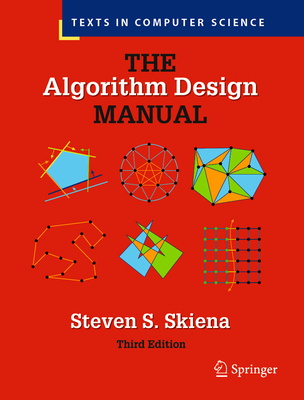the best books for developers

Topics: Algorithms, Data Structures
By Steven S. Skiena
9783030542559
"The Algorithm Design Manual" by Steven S. Skiena is like your treasure map to the world of algorithms. It's all about solving problems efficiently, whether you're a programmer, a student, or just someone curious about how stuff works.
First, it introduces you to the basics – what algorithms are and why they matter. It's like learning the language of problem-solving.
The book is like a toolbox of algorithmic techniques. You'll discover sorting algorithms, searching algorithms, and ways to solve problems like a puzzle master.
It doesn't stop at the easy stuff. It's like a crash course in NP-completeness and how to tackle the toughest problems, like the Sudoku of algorithms.
You'll learn about data structures, too – the building blocks of algorithms. It's like knowing which LEGO pieces to use to build the coolest castle.
But it's not just theory. The book is full of real-world examples and practical advice. It's like having a wise mentor by your side as you tackle coding challenges.
And it doesn't forget about the fun stuff – like computational geometry, string algorithms, and even some AI and heuristics. It's like a buffet of algorithmic delights.
In a nutshell, "The Algorithm Design Manual" is like your secret weapon for becoming a problem-solving ninja. Whether you're preparing for coding interviews or just want to level up your programming skills, this book is like a trusty guide through the algorithmic wilderness, helping you find the best paths and avoid the traps along the way.
Chapter 1: Introduction to Algorithm Design
In the opening chapter, Skiena introduces the fundamental concepts of algorithm design and analysis. He discusses the importance of algorithms, the algorithm design process, and provides an overview of the book's structure. It's like a warm-up before embarking on the algorithmic journey.
Chapter 2: Algorithm Analysis
Chapter 2 delves into algorithm analysis, emphasizing the importance of efficiency in algorithm design. Skiena introduces the concept of Big O notation and discusses various algorithmic complexities. It's like learning the language of measuring and comparing algorithms.
Chapter 3: Data Structures
This chapter focuses on data structures, the essential building blocks of algorithms. Skiena covers topics like arrays, linked lists, stacks, and queues. Readers learn how to choose the right data structure for specific tasks and gain insights into efficient data manipulation.
Chapter 4: Sorting and Searching
Chapter 4 is all about sorting and searching algorithms. Skiena explores various sorting techniques like quicksort and mergesort, as well as searching algorithms like binary search. Readers discover efficient ways to organize and retrieve data.
Chapter 5: Graph Traversal
In this chapter, Skiena dives into graph algorithms, covering topics like depth-first search (DFS) and breadth-first search (BFS). He explores applications of graph traversal in solving real-world problems and demonstrates their importance in various domains.
Chapter 6: Weighted Graph Algorithms
Chapter 6 extends the discussion to weighted graphs and algorithms for solving problems like finding the shortest path and minimum spanning trees. Skiena introduces Dijkstra's algorithm and Prim's algorithm, providing practical insights into their applications.
Chapter 7: Combinatorial Search and Heuristic Methods
This chapter delves into combinatorial search and heuristic methods for solving optimization problems. Skiena introduces techniques like backtracking, branch and bound, and dynamic programming. Readers learn how to approach complex problems and find near-optimal solutions.
Chapter 8: Dynamic Programming
Chapter 8 focuses on dynamic programming, a powerful technique for solving problems with overlapping subproblems. Skiena discusses the principles of dynamic programming and provides examples of its application in various domains, including sequence alignment and scheduling.
Chapter 9: Intractable Problems and Approximation Algorithms
In this chapter, Skiena explores intractable problems and NP-completeness. He discusses the limitations of solving certain problems efficiently and introduces approximation algorithms as a way to find near-optimal solutions to NP-hard problems.
Chapter 10: Local Search Techniques
Chapter 10 delves into local search techniques and heuristics. Skiena discusses methods like simulated annealing and genetic algorithms for solving optimization problems. Readers gain insights into using these techniques to find solutions in complex, real-world scenarios.
Chapter 11: Amorphous Computing
The final chapter explores the concept of amorphous computing, where algorithms are designed to adapt to changing environments. Skiena discusses swarm intelligence and self-organizing systems, offering a glimpse into the future of algorithm design and computation.